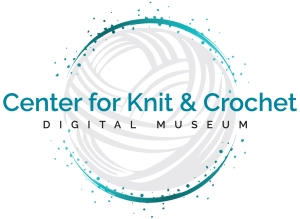Elizabeth teaches a group of boys to knit at the KAG Bethel Children’s Home. Courtesy of Elizabeth Okeyele-Olatunji
As a passionate knitting teacher certified by the Craft Yarn Council of America, I have had many opportunities to observe the benefits of knitting for school age children.
In 2020, I became curious about how children in countries across Africa would react to learning how to knit and crochet.
- Will their eyes light up when they get past the learning curve?
- Will there be reports of some kids knitting so much that they fall asleep with their needles?
- Will they love working with yarns as much as the children I had encountered since my journey as a knitting teacher in Nigeria?
To find out, I developed a business plan for my business, Tunnizze Creation, to pass on knitting skills to 20,000 children across Africa by 2030.
Then came a chance to visit Kenya in August 2023. I reached out to Eshe yarns in Nairobi via Facebook and she supported my visit by getting in touch with 5 children’s centres scattered across Kenya, and involving the Kenya Girl Guides Association (kgga.co.ke), which is part of an international movement that includes the Girl Guides Association of the UK and the Girl Scouts of America.
We visited the children’s homes with 18 volunteer knitters and crocheters, starting our classes with introductions, followed by inspiring talks about working with the yarns. We group the children with volunteers as we start to teach.
Teaching starts with naming the tools correctly. We do this to counter a popular trend I notice in Nigeria where people call a crochet hook a “knitting pin.” So our goal isn’t just to pass on skills, but to teach them both the skills and the correct terminology.
Each child receives a kit with knitting needles donated by PONY Needles of India, and yarns donated by Haffar Industries, Ltd. of Nigeria, and by Eshe Yarns of Nairobi, Kenya. We first demonstrate the basics, such as casting on, the knit stitch, and then casting off. Most of the volunteers came well dressed in items made with yarns to keep the learners motivated.
The curiosity displayed by the children is so unique as they all try to get past the learning curve. From casting on, learning the knit stitch, and casting off, each child is seen busy with their hands as they strike up conversations in Swahili, their local language.
At the end of the classes, they are curious to ask us when we will be visiting again. I leave with a promise that Nancy Kamau, my host from Eshe Yarns, will visit periodically to stay in touch, and that we will continue to request donations of yarns from yarn companies on their behalf.
Four of the homes we visited are residences for orphaned children, teen mothers, and some abused girls. It feels right to leave them with a activity like knitting and crochet that
- can keep them busy;
- presents the opportunity to create items for sale; and
- hones their skills to support themselves in the community!
I am confident that other children scattered across Africa will benefit greatly from working with their hands, and from learning to knit and crochet.
I have set my eyes on Uganda, Tanzania, and Rwanda next. I am working already with some volunteers to identify the children’s homes that we will visit.
You can contact me directly at tunnizzie@gmail.com to ask questions about this effort, and to offer support in the form of donations of yarn, notions, tools, and books about knitting and crochet that I can take on my next teaching trip. All donations are greatly appreciated.
Elizabeth Okeyele-Olatunji

Elizabeth Okeyele-Olatunji





